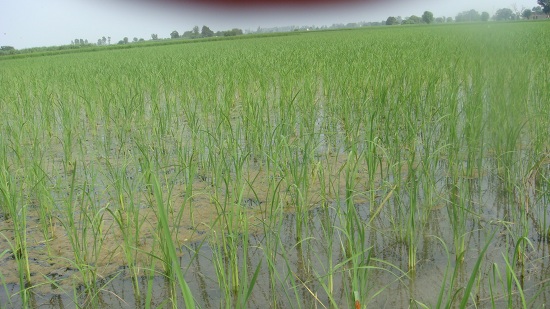 Estimated at 110.15 million tonnes, India set a new record in the production of rice in 2016-17 and this is higher than 2015-16 estimates which stood at 104.41 million tonnes. Further, agricultural exports increased from INR 2,27,193 crores in 2012-13 to INR 2,27,554 crore in financial year 2016-17 registering a growth of nearly 0.15%. This success can be primarily attributed to the higher exports of rice (both basmati and non-basmati) followed by spices, cotton and sugar.
Estimated at 110.15 million tonnes, India set a new record in the production of rice in 2016-17 and this is higher than 2015-16 estimates which stood at 104.41 million tonnes. Further, agricultural exports increased from INR 2,27,193 crores in 2012-13 to INR 2,27,554 crore in financial year 2016-17 registering a growth of nearly 0.15%. This success can be primarily attributed to the higher exports of rice (both basmati and non-basmati) followed by spices, cotton and sugar.
While the data indicates how rice is an integral part of India – both in terms of production and trading commodity, it is essential to note its impact on natural resources. Conventionally, production of rice is a water intensive activity. The transplanted rice needs to be water lodged for at least 1.5-2 inches for 5-6 weeks post transplanting, to control growth of weeds. Due to this practice, 1 kg of rice requires 2000-3000 litres of water. The flooded rice field also leads to greenhouse gas emissions as methane, a potent greenhouse gas is produced by bacteria in the waterlogged soil. During transplantation, farmers use an average of 50 ltrs/acre diesel which also contributes to GHG emissions. In addition to these, there are different problems like lowering water table, scarcity of labour for transplanting during peak periods and deteriorating soil health that demand exploration of some alternative method to sustain productivity of rice as well as natural resources.
One such technology is the Direct Seeded Rice (DSR) which makes rice production water efficient. DSR Technology, one of the oldest techniques of crop establishment, has a low input demand and in light of the challenges sighted above, is gaining popularity again. The technology solves most of the problems – it is less labour intensive, requires less water, less drudgery, helps in early crop maturity, has a low production cost, provides better soil physical conditions for crops and reduces methane emissions.
DSR refers to the process of establishing a rice crop from seeds sown in the field rather than by transplanting seedlings from the nursery. It has been recognized as the principal method of rice establishment since 1950’s in developing countries. Direct seeding can be done by sowing of pregerminated seed into a puddled soil (wet seeding) or standing water (water seeding) or prepared seedbed (dry seeding). Improved short duration and high yielding varieties, nutrient and weed management techniques encouraged the farmers to shift from traditional system of transplanting to DSR culture.
DSR technology saves upto 30% water used in transplantation as it uses chemical weedicides to remove these weeds. It also helps farmers save upto 15 litres/acre through this technology as puddling operations are eliminated. Further, farmers who currently spend Rs 6000-7000/hectare on labour can save Rs 5500-6000/hectare using DSR.
Farmers across the country have been implementing DSR technology with encouraging success. As per a news report, Tarseem Singh, a farmer from Raikot shared his success story of using DSR technology. He said that he employed the technology two years ago, when he watered the rice fields to prepare the seedbed, but thereafter has not used groundwater again. Karnail Singh, another farmer from the region using DSR Technology shared that he not only saved Rs 2,000 per acre on labour costs but also got 3 to 4 quintals of additional produce using the technology. With improved soil conditions, the benefits of DSR reach beyond rice to the next crop planted in the field.
These alternate technologies and techniques have been embraced and benefits have been reaped by many farmers. DSR Technology should be implemented in India and several states will be benefitted by it in the coming years. Government should definitely support the upskilling and training of our farmers in implementing this technology to help them experience the joy of an improved yield from 22 plants/m2 (in case of transplanted rice) to 40 plants/m2 (using DSR).
